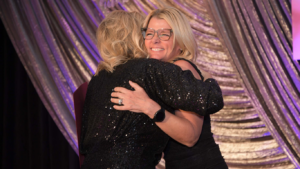It’s taking control of the airwaves, music charts, night clubs, music festivals, possibly even your iPod: electronic dance music, or EDM as it is commonly called. Not only are some of these DJs making millions of dollars, but they’re breaking records on the Billboard charts as well. Just this week, David Guetta’s single “Titanium” broke a record on the Billboard Dance/Club Chart by having the longest stay on the chart since Michael Jackson’s “Thriller.”
EDM has gained quite a large following in the past five years — so much so that music festivals such as Coachella and Lollapalooza have increased the number of EDM acts showcased at each event. There have even been festivals created that are solely dedicated to the genre, including the Ultra Music Festival in Miami, which attracted 165,000 visitors at this year’s event; and the wildly popular Electronic Daisy Carnival, which attracted approximately 320,000 guests at this year’s three-day event in Las Vegas and generated $207 million in revenue.
Still think EDM is just a fad? Looks like it’s here to stay.
So it’s of no surprise that EDM has found a lovely home and fan-base in the Valley, with night clubs hosting EDM artists to DJs performing at hotel restaurants (a la the District American at the Sheraton in Downtown Phoenix).
“Our proximity to Las Vegas and Los Angeles has helped our local scene grow,” says Matt Brough, director of talent for Steve LeVine Entertainment & Public Relations (SLE) in Scottsdale. “With parties like EDC, and clubs like Marquee, the fans have an unparalleled access to the world’s top DJs and parties.”
However, EDM has always had a following, dating back to the early 1980s when synthesizers became popular with bands like The Eurythmics and Depeche Mode. It wasn’t until nearly 20 years later when high-profile DJs began to notice their music cross over to a mass audience. The reason for this cross over? According to Steve LeVine, CEO of SLE, it’s accessibility.
“Great dance music has been around for many years,” says LeVine, creator of the Sound Wave music festival, an electronic music festival held in Tempe, which hit its all-time attendance record with nearly 10,000 people attending this year’s event. “I believe the popularity has increased because people can access music easier than ever and there are more mediums playing many different genres.
“As DJs, we became the trend setters that introduced dance music to our own individual markets and now many years later, dance music has taken over the airwaves and is what you hear everywhere,” LeVine adds.
And it seems to be played by just about anybody, too. Remember when Paris Hilton tried her hand at DJ-ing? Or perhaps how Solange Knowles, younger sister of Beyonce, started record-spinning a couple years ago? Although it may seem like fun, easy even, a lot more work goes into being a DJ than one may think. The skill is something more than just splicing together a playlist of top radio hits; it’s an art-form, according to Alexander Siordian, Radio Technician at KISS FM. For many DJs across the Valley, it’s about feeling and knowing the music and experimenting by trial-and-error, he adds.
“Technology is an amazing thing,” Brough says. “Right now is the easiest it has ever been to be ‘a’ DJ. To be a ‘good’ DJ is a whole other story.
“Anyone can download the Beatport Top 20 songs and mix those together with the Sync button. It takes years of skill and talent to know how to program the right song at the right time to take the dance floor on a real journey,” Brough said.
While the radio and YouTube has introduced many to the genre and its nationally recognized names such as Deadmau5, David Guetta and Steve Aoki, closer-to-home venues, including Smashbox, Wild Knight and El Santo, are taking the initiative to showcase local talent. For instance, El Santo Cantina in Scottsdale is hosting a month-long DJ series this fall, which was kicked off by Paul Oakenfold’s performance in September.
“Electronic music has an energy behind it that generally is not captured with traditional radio music,” Brian Ruede, owner of El Santo Cantina in Scottsdale. “It also often incorporates remixes of popular radio songs that allow it to cross over to mainstream listeners.
“EDM is a high energy, feel-good music that brings a great crowd. We love the crowd and the energy that comes with these shows.”
And for those of you who believe EDM merely a trend, it appears that it’s here to stay. Not only are some DJs making millions for their services — like Tiesto, who is reportedly the highest-paid DJ in the world with $22 million in earnings — listeners can expect EDM to evolve. According to LeVine, EDM will continue to change, constantly. And that includes collaborations with artists outside of the EDM bubble, including Leona Lewis and Avicii’s “Collide,” Calvin Harris and Florence Welch’s “Sweet Nothing,” and Bassnectar’s remix of Ellie Goulding’s “Lights.”
“We’re starting to see a lot more hip-hop and rock with dance beats,” LeVine says. “Also, reggae, alternative and adult contemporary music genres are all being remixed into dance versions. Additionally, there will be many variations of dance music that surface sooner than we think. Some will be short lived and others will be embraced for many years to come.
“Just look at how much dubstep has grown in the past year,” Levine adds. “It’s pretty amazing to watch the entire genre continually grow.”



